Unit 9 - Aerobic and Anaerobic respiration
1/40
There's no tags or description
Looks like no tags are added yet.
Name | Mastery | Learn | Test | Matching | Spaced |
|---|
No study sessions yet.
41 Terms
Glycolysis
The breakdown of glucose into pyruvate and the release of energy.
Step 1 of glycolysis
Glucose is phosphorylated using ATP and turns into glucose-6-phosphate. Osomerase then converts this into fructose-6-phosphate, which is then phosphorylated into fructose - 1,6 - bisphosphate.
Glycolysis - Step 2
Adolase causes the lysis of bisphosphate into dihydroxyacetone-phosphate and glyceraldehyde-3-phosphate (G3P). Dihydroxyacetone-phosphate gets turned into G3P by another reaction.
Glycolysis - Step 3
G3P is oxidized, extracting high energy electrons and H+ which are picked up by NAD+, producing NADH. G3P then gets phosphorylated (without ATP) and has enough phosphate to phosphorylate 2 ADP into 2 ATP. This molecule then becomes pyruvate, and this happens on the other side.
Net Products of Glycolysis
2 ATP (4 formed, 2 used), 2 Pyruvate, H2O, 2 NADH + 2H+
When does glycolysis take place?
During anaerobic OR aerobic respiration
Where does glycolysis take place?
Occurs in the cytoplasm.
Inner membrane
A
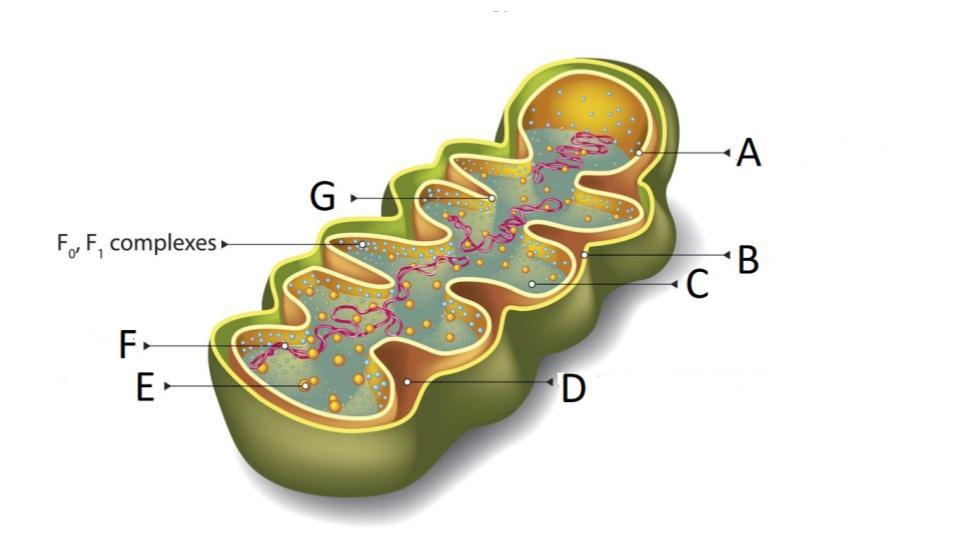
Outer membrane: Separates the mitochondrion from the rest of the cell, creating a compartment with the ideal conditions for aerobic respiration.
B
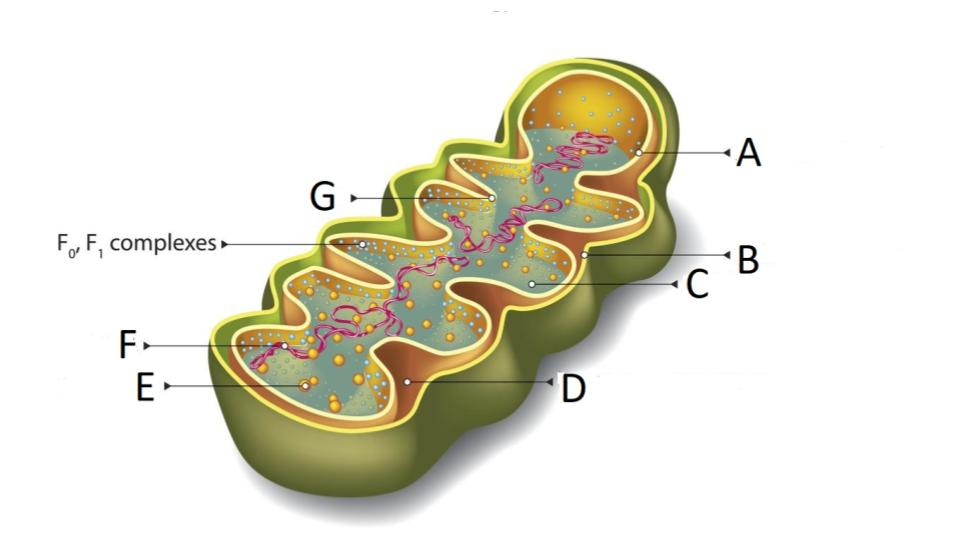
Matrix: The space inside the mitochondria that contains the DNA, ribosomes, enzymes, and small organic molecules. These enzymes are used for the linking reaction and the krebs cycle. Also contains the substrates of the krebs cycle.
C
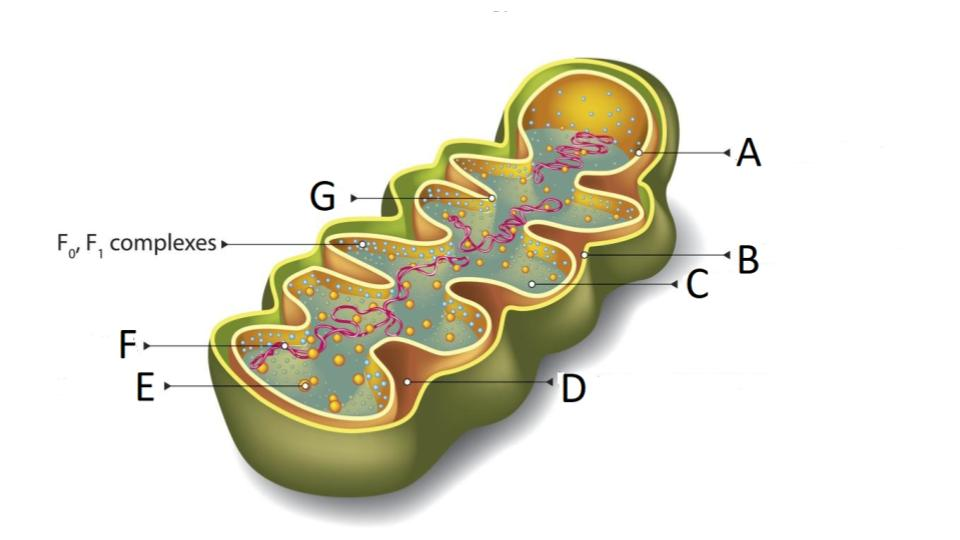
Inner membrane space: The space between the inner and outer membrane. Where H+ protons go to during the electron transport train.
D
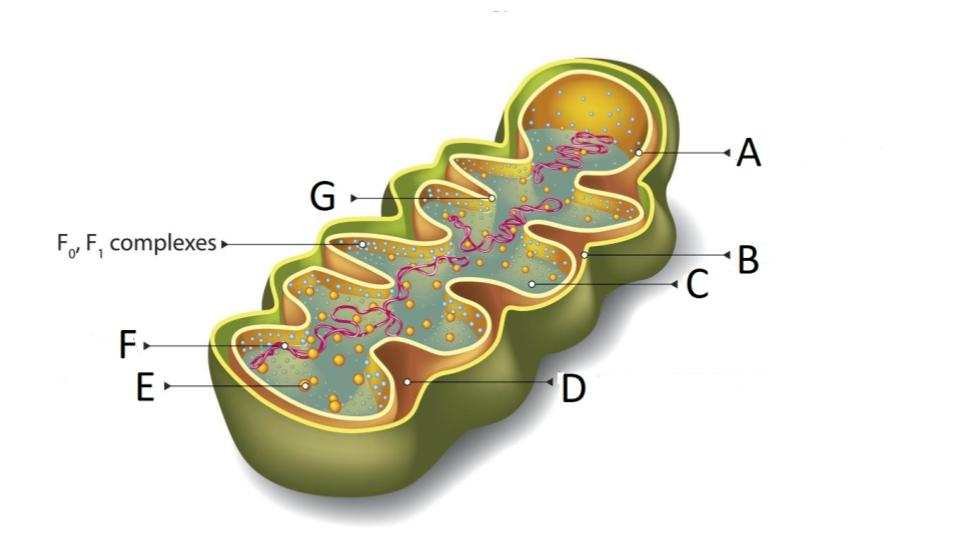
70s ribosomes
E
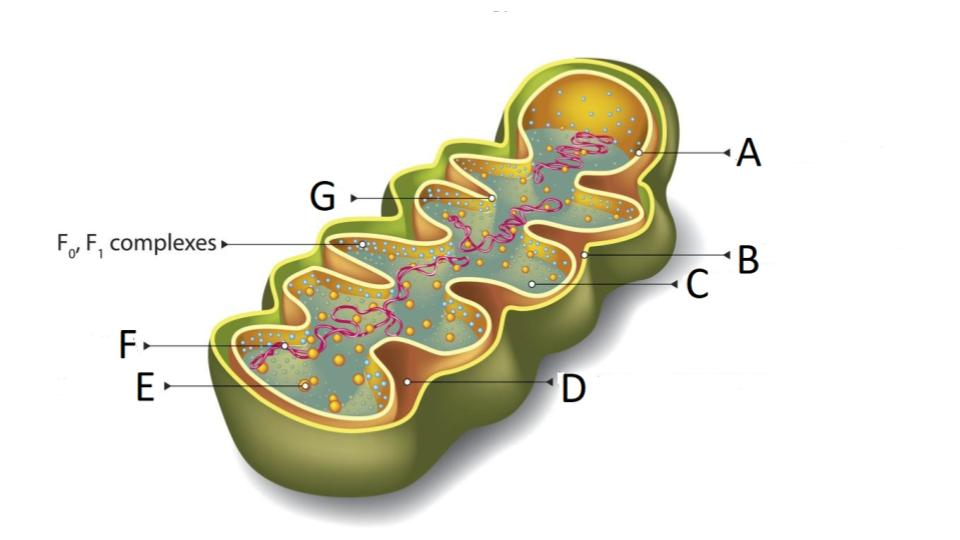
Circular naked DNA
F
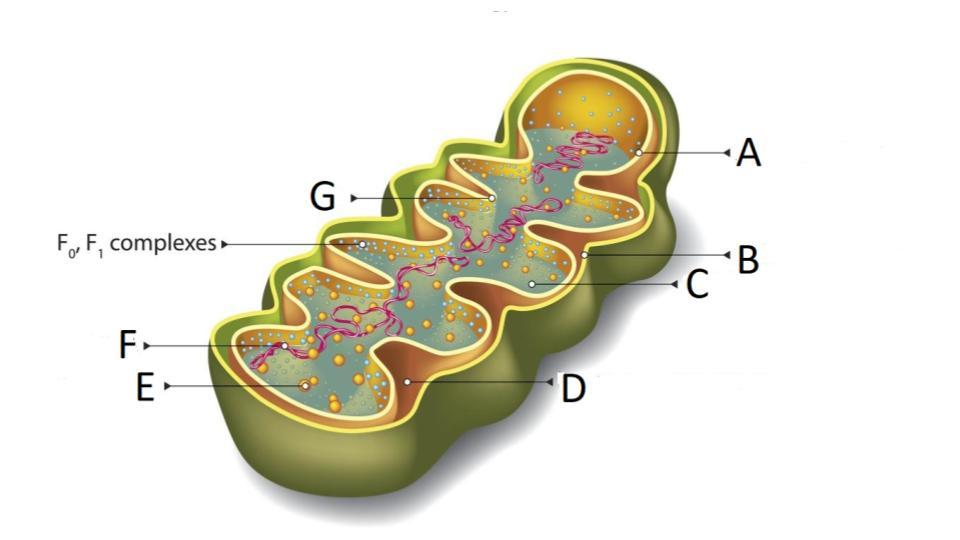
Cristae: Infoldings of the inner membrane that increase surface area for more oxidative phosphorylation.
G
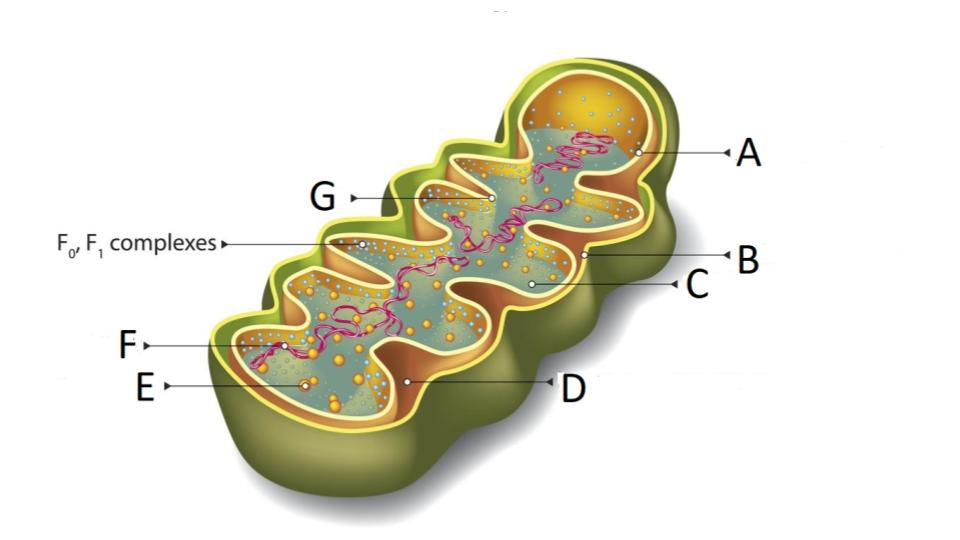
Linking Reaction
A stage during aerobic respiration that links glycolysis and the Krebs cycle; is the intermediate step in aerobic respiration. Takes place in the mitochondrial matrix.
Linking reaction - Step 1
Pyruvate is decarboxylated (is removed in the form of CO2), leaving pyruvate to become a 2-carbon molecule called acetyl.
Linking Reaction - Step 2
Acetyl is oxidized/NAD+ is reduced by way of transferring an H+/electrons to NAD+, forming NADH.
Linking reaction - step 3
Coenzyme A enters and binds to acetyl. This forms Acetyl Co-A, which enters the krebs cycle.
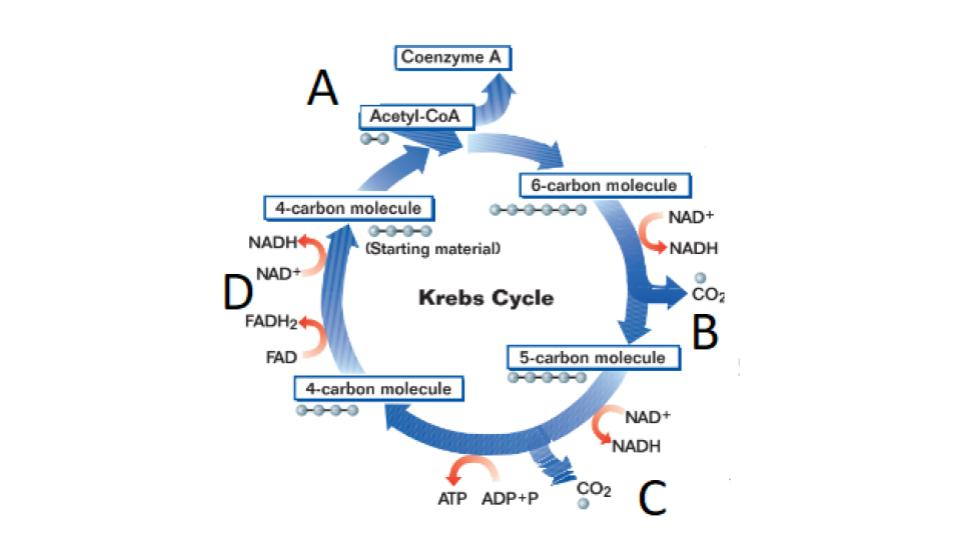
Krebs cycle
A sequence of reactions that take place during aerobic respiration (the third step). Creates CO2 and H20 as waste products, and also produces ATP.
Krebs cycle - step 1
Acetyl Co-A enters and merges with oxaloacetate. The coenzyme A is removed, forming citrate (a 6-carbon molecule).
Krebs cycle - Step 2
Citrate is oxidized as an NAD+ is reduced, forming NADH. Citrate is decarboxylated (CO2 formed), leaving/forming a 5-carbon molecule.
Krebs cycle - Step 3
The 5-carbon molecule is oxidized and NAD+ is reduced. The molecule is once again decarboxylated (CO2 formed). This leaves a 4-carbon molecule. ATP is formed by the fusion of ADP and P in this reaction.
Krebs cycle - step 4
The resulting 4-carbon molecule is oxidized/FAD and NAD+ are reduced to produce FADH2 and NADH. This changes the 4-carbon molecule into oxaloacetate, restarting the whole cycle.
Net products of the Krebs Cycle
2 CO2, 3 NADH, 1 FADH2, and 1 ATP
Properties of ATP
soluble
relatively small, so can move by facilitated diffusion
very reactive
can delivery energy in small amounts
Energy from ATP can be used for
active transport across a membrane
synthesis of macromolecules (anabolism)
movement of the cell
movement of cell components
Oxidative phosphorylation
The final step of aerobic respiration harnesses oxygen reduction to generate high-energy phosphate bonds in the form of adenosine triphosphate (ATP). It is a series of oxidation-reduction reactions that involve the transfer of electrons from NADH and FADH2 to oxygen across several proteins. Contains two main parts: the Electron Transport Chain and chemiosmosis.
Electron Transport chain
A series of four protein complexes that transport electrons and H+ ions.
ETC Step 1
NADH carries electrons to the first protein. As electrons move through the protein, energy is gradually released, and that allows H+ to be pumped through the protein as well and into the inner membrane space.
ETC Step 2
Another molecule takes these electrons and also picks up electrons donated by FADH2. These electrons are passed on to another protein complex. H+ ions are once again pumped through the protein complex across the membrane into the inner membrane space.
ETC Step 3
The electrons are once again transported to another protein, more H+ protons are pumped to the inner membrane space, making the concentration higher.
ETC Step 4
The electrons that reach the final protein complex are met by oxygen and they are picked up by oxygen and the H+ that are just sitting in the matrix, forming water.
Chemiosmosis
ATP synthase makes a channel that H+ ions can flow through from high to low concentration. The facilitated diffusion causes ATP synthase to spin and produce ATP as ADP and P come and join together in the protein before leaving.
Net amount of ATP from oxidative phosphorylation
32-33 ATP made per glucose molecule!
Lactic acid fermentation
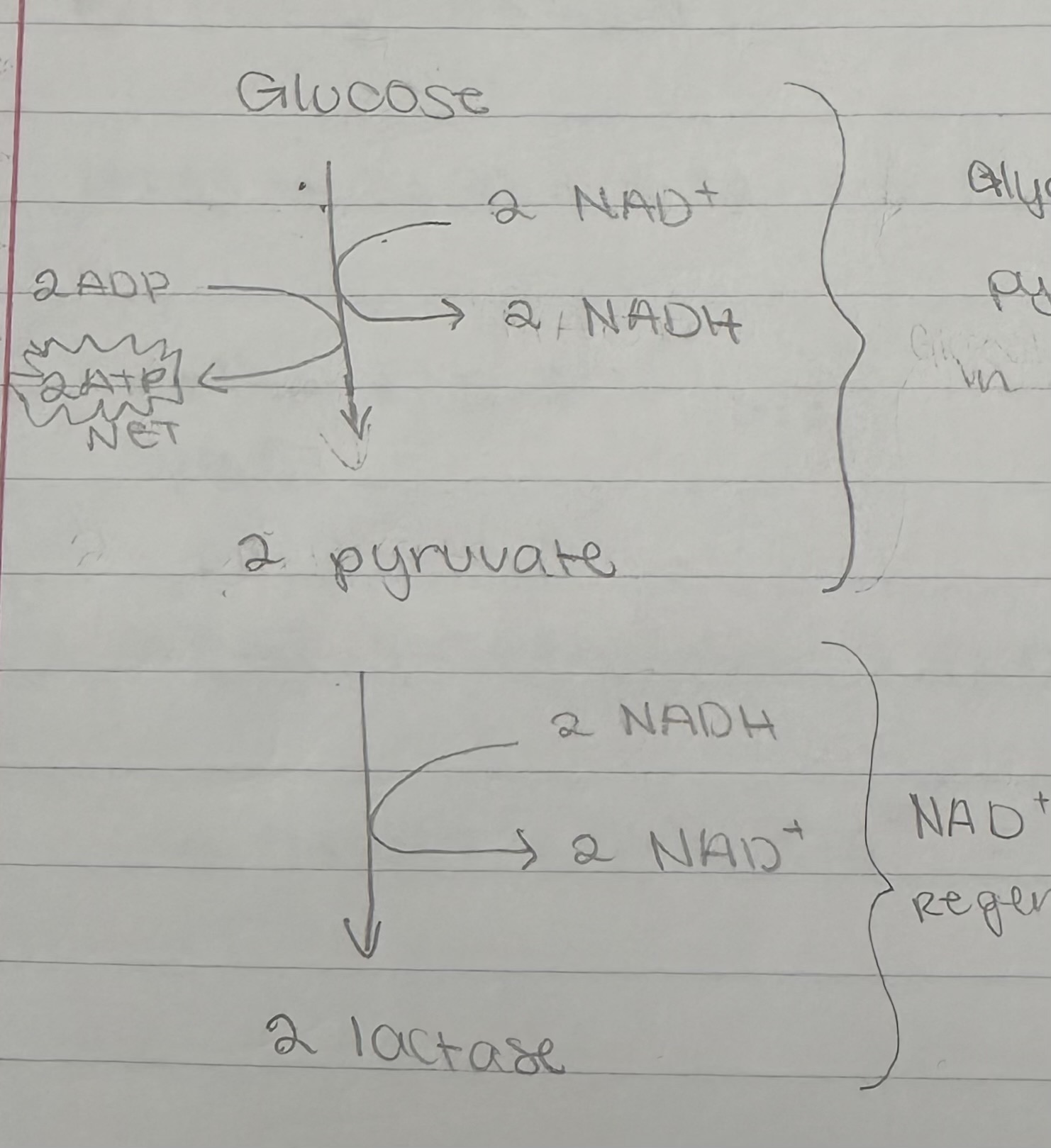
Alcoholic fermentation
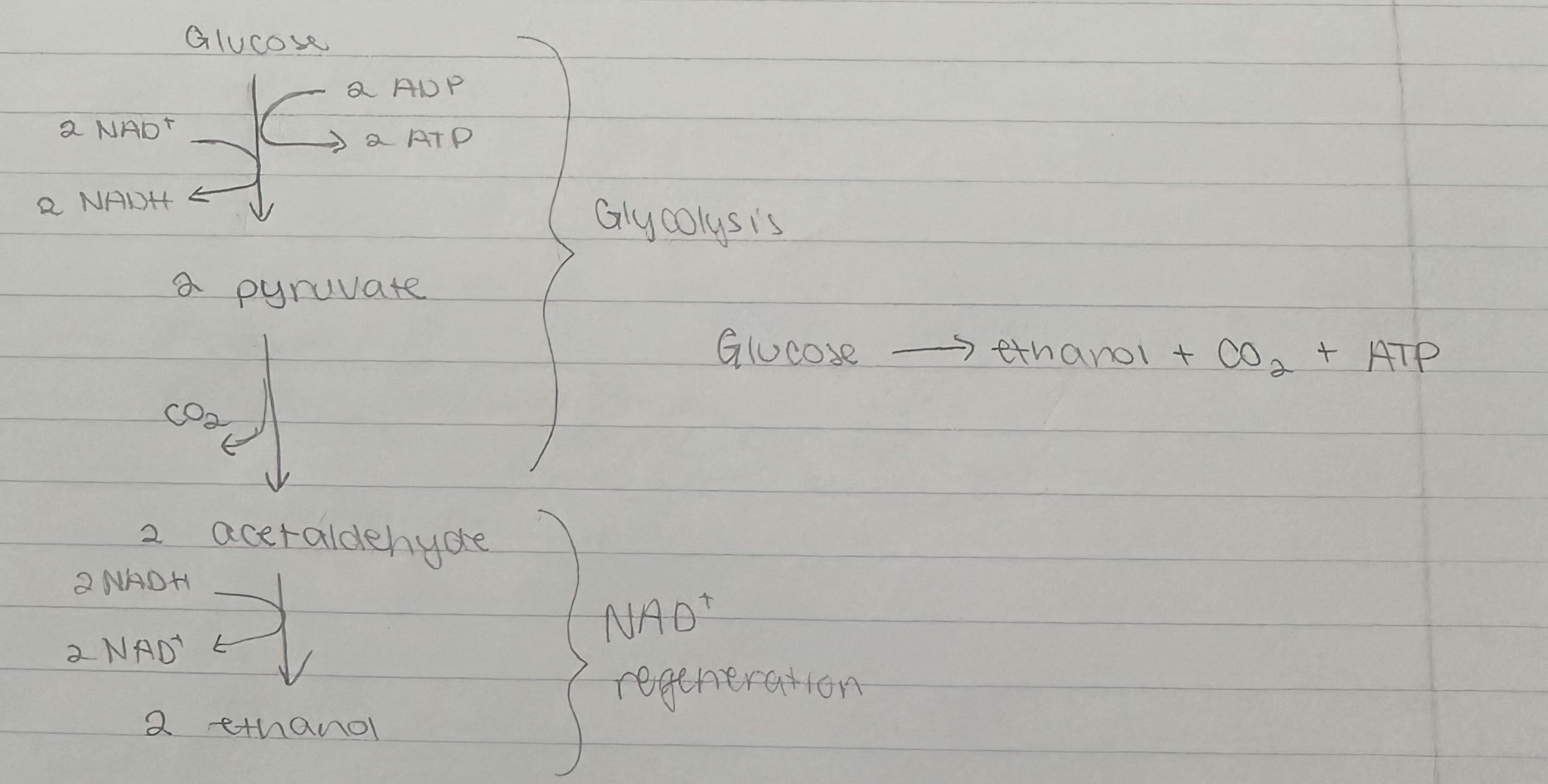
Anaerobic respiration important
Because this is how the body makes energy (ATP) when it is too low on oxygen (the amount produced is way lower than the amount produced with aerobic respiration).
Alcoholic fermentation used
in brewing and baking
Differences between lipids and carbohydrates as respiratory substrates
Lipids have higher energy yield per gram due to less oxygen and more oxidizable hydrogen and carbon
glycolysis and anaerobic respiration occur only if a carbohydrate is the substrate
because lipids are insoluble, an organism can store a lot of energy in them without having to increase water oil
fat stores are common for animals that have to survive long periods without food
oils are used to store energy in plants, especially in seeds and fruits
Respirometer
Organism performs cellular respiration
CO2 produced is absorbed by the alkali (change in gas volume and pressure is due to reduction in O2, not increase of CO2)
There is a reduction in O2 gas as it is used up during respiration, reducing the volume of air in the respirometer
Pressure drops in the container as there is less gas
The drop in pressure in the container causes the movement of the fluid in the capillary tube
Variables affecting the rate of cell respiration
metabolic rate of the cell
size of the organism
supply of oxygen
supply of substrates for respiration
temperature
pH